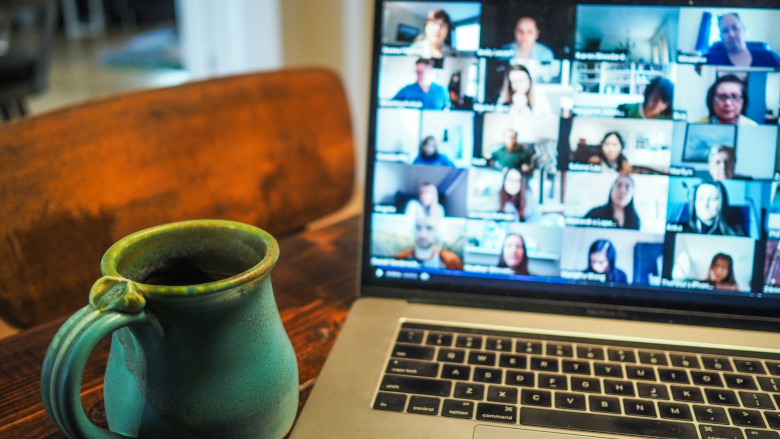- AI Is Scaling Fast, and So Must Our Networks and Policies
- Intel appears stuck between ‘a rock and a hard place’
- “언론은 몰려오고, 내부는 혼돈에 빠지고”···CISO가 직접 겪고 깨달은 보안 사고 교훈 8가지
- AI의 상상과 실사 영화의 콜라보···구글, 단편 영화 앤세스트라 제작 과정 공개
- Select Prime members can get Kindle Unlimited for 3 months at no cost - here's how
Empowering remote healthcare workers: A collaborative approach

Healthcare organizations are increasingly adopting remote work as a permanent strategy. In this new era, robust cybersecurity is critical. This article delves into strategies healthcare organizations can implement to empower their remote workforce and protect sensitive patient and corporate data.
Understanding shared security responsibility
With remote employees now relying on IT resources beyond the control of healthcare organizations, the concept of shared security responsibility becomes paramount. It’s not just about organizations securing as much of the remote work environment as possible; it’s about employees understanding their crucial role in this process. This mutual understanding is the foundation of a secure remote work environment.
For example, organizations often provide remote workers with laptops and tablets. This strategy allows the organization to take primary responsibility for device security. Employees, in turn, must follow organizational policies and guidelines regarding device usage and security.
In contrast, employees who use personal devices often take on significant responsibilities for configuring their devices, applying security updates and monitoring for malware. Organizations are responsible for ensuring these Bring Your Device (BYOD) arrangements comply with security policies.
Recognizing and understanding the shared responsibilities is the first step towards a secure remote work environment. Organizations and employees can better navigate the necessary security practices with this foundation.
Protecting endpoints
Endpoints represent potential vulnerabilities in remote work environments. The following actions should be taken to reduce the cyber risk associated with the use of these devices:
- Activate encryption on all sensitive files and devices to ensure that data remains secure even if intercepted or the device is lost or stolen.
- Regularly update antivirus software and scan devices to protect against malware and viruses.
- Apply security updates and patches promptly to all operating systems and applications, keeping security features current.
- Enable firewalls on all devices to monitor and control the data that travels to and from the device, preventing unauthorized access.
- Secure mobile devices by installing trusted security applications, regularly updating them and using security features like remote wipes in case of loss or theft.
- Use strong, unique passwords for endpoints.
Organizations implementing a BYOD strategy may consider mandating the installation of mobile device management (MDM) and data loss prevention (DLP) tools on personal devices. These tools offer tracking, data wiping capabilities, policy enforcement, encryption and monitoring, allowing the organization to take on more security responsibilities. Although beneficial, MDM and DLP tools can raise privacy concerns due to their access to personal data. Organizations must implement clear privacy policies to address these concerns and enable employees to manage their privacy settings effectively.
Securing home networks
Home networks serve as the gateway to remote work for most healthcare professionals, making their security a top priority. Organizations should encourage and assist employees to:
- Securely configure routers, change default passwords and use strong, complex passwords.
- Set up a dedicated network for work-related activities to segregate personal and professional data.
- Implement robust Wi-Fi security protocols like Wi-Fi Protected Access 3 (WPA3) to enhance protection against unauthorized access.
- Use network firewalls to monitor and control incoming and outgoing traffic, securing home networks from potential intrusions.
Using public networks
Organizations must recognize that remote employees may access resources from networks other than their home network. When accessing organizational resources from public networks, remote healthcare workers must exercise caution to protect sensitive data from interception by malicious actors. Employees should:
- Connect only to secure Wi-Fi networks for work-related tasks and avoid using public Wi-Fi without VPN protection.
- Disable auto-connect features on all devices to prevent them from automatically connecting to potentially unsafe networks.
- Be cautious of network spoofing; verify network authenticity before connecting to prevent data theft.
Securing access to corporate resources
In remote work, implementing effective authentication and access controls is critical for maintaining the security of healthcare data. Adequate security measures include:
- Implementing robust authentication protocols, including multi-factor authentication (MFA). Requiring a combination of passwords, biometric verification, and security tokens enhances security defenses against unauthorized access.
- Following secure connection practices; requiring virtual private networks (VPNs) to create a safe and encrypted channel for accessing corporate resources.
- Deploying conditional access systems that assess the risk profile of a login attempt based on factors like location, device compliance, and user behavior before granting access.
- Conducting regular audits and access reviews to ensure appropriateness and adjust controls as necessary. This helps prevent the accumulation of unnecessary access rights that could increase security risks.
Advanced security measures
Organizations may elect to introduce advanced measures to enhance remote work security further:
- Behavioral analytics tools can help detect unusual activities that might indicate a security breach.
- Zero-trust policies, requiring verification from everyone attempting to access network resources, can effectively minimize potential insider threats.
Navigating shared vigilance
Maintaining a culture of shared vigilance between organizations and employees is vital for effective cybersecurity in remote healthcare work environments. Organizations should:
- Provide ongoing cybersecurity training that includes simulations of phishing and other common attacks to help employees recognize and respond to threats.
- Establish clear protocols for reporting security incidents, making it easy and mandatory for employees to report suspicious activities quickly.
- Foster open communication between remote workers and IT teams to discuss and address security concerns promptly.
Understanding and embracing shared security responsibilities is essential for mitigating risks in healthcare’s remote work environment. By following tailored guidance for securing networks and endpoints, healthcare organizations can ensure the safety of patient data.

